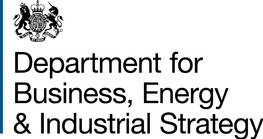Model output described in the 2001 IPCC Third Assessment Report* (SRES scenarios), 30-year means
One of the main goals of the Data Distribution Centre was to make available to the impacts community a set of recent GCM outputs that both reflect the state-of-the-art of model experiments and provide a representative range of results from different GCMs. To this end, the IPCC TGCIA defined a set of criteria that were applied to identify a small number of GCM experiments whose results could be deposited at the IPCC DDC. Models should:
|
In addition,the models preferably should:
- have performed a 2 x CO2 mixed layer run,
- have participated in AMIP (Atmospheric Model Intercomparison Project)
- have a resolution of at least T40, R30 or 3º latitude x 3º longitude
- consider explicit greenhouse gases (e.g. CO2, CH4, etc.)
On the basis of these criteria, results of experiments at seven modelling centres are currently held by the DDC, with the possibility of others being added later if they too qualify for inclusion.
Data
You can browse the file contents and download selections of data as spreadsheet files (comma-separated-variable [CSV] format) through the DDC file navigator, or download complete datasets from the links below: </p>
| GCM</font> | A1b</font> | A1T</font> | A1FI</font> | B1</font> | A2</font> | B2</font> |
| CCSR/NIES | 1 2100 |
1 2100 |
1 2100 |
1 2100 |
1 2100 |
1 2100 |
| CGCM2 | . | . | . | . | 1 2100 |
1 2100 |
| CSIRO-Mk2 | . | . | 1 2100 |
1 2100 |
1 2100 |
1 2100 |
| ECHAM4 | . | . | . | . | 1 2100 |
1 2100 |
| GFDL-R30 | . | . | . | . | 1 2100 |
1 2100 |
| HadCM3 | . | . | 1 2100 |
1 2100 |
3 2100 |
2 2100 |
| NCAR-PCM | . | . | . | . | 1 2100# |
1 2100# |
Key:
a: = Number of integrations (i.e., members of ensemble)
b: = End year of integrations
# = Start year was 1980, therefore not possible to construct a 1961-90 baseline period
To access the data from the integrations click on the model name.
*: Most models outputs are referred to in the report, but a few (comparable) outputs were included later.
 "
"




